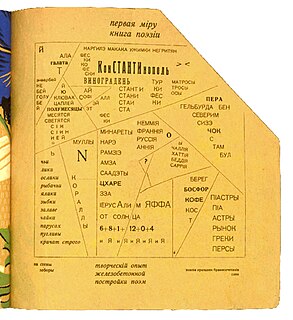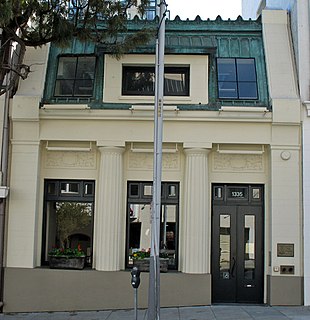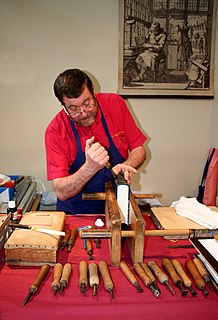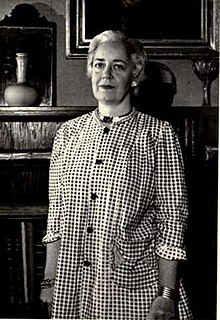Related Research Articles

Concrete poetry is an arrangement of linguistic elements in which the typographical effect is more important in conveying meaning than verbal significance. It is sometimes referred to as visual poetry, a term that has now developed a distinct meaning of its own. Concrete poetry relates more to the visual than to the verbal arts although there is a considerable overlap in the kind of product to which it refers. Historically, however, concrete poetry has developed from a long tradition of shaped or patterned poems in which the words are arranged in such a way as to depict their subject.

The Gutenberg Bible was the earliest major book printed using mass-produced movable metal type in Europe. It marked the start of the "Gutenberg Revolution" and the age of printed books in the West. The book is valued and revered for its high aesthetic and artistic qualities as well as its historic significance. It is an edition of the Latin Vulgate printed in the 1450s by Johannes Gutenberg in Mainz, in present-day Germany. Forty-nine copies have survived. They are thought to be among the world's most valuable books, although no complete copy has been sold since 1978. In March 1455, the future Pope Pius II wrote that he had seen pages from the Gutenberg Bible displayed in Frankfurt to promote the edition, and that either 158 or 180 copies had been printed.

Book collecting is the collecting of books, including seeking, locating, acquiring, organizing, cataloging, displaying, storing, and maintaining whatever books are of interest to a given collector. The love of books is bibliophilia, and someone who loves to read, admire, and a person who collects books is often called a bibliophile but can also be known as an bibliolater, meaning being overly devoted to books, or a bookman which is another term for a person who has a love of books.

Letterpress printing is a technique of relief printing. Using a printing press, the process allows many copies to be produced by repeated direct impression of an inked, raised surface against sheets or a continuous roll of paper. A worker composes and locks movable type into the "bed" or "chase" of a press, inks it, and presses paper against it to transfer the ink from the type, which creates an impression on the paper.

The Kelmscott Press, founded by William Morris and Emery Walker, published fifty-three books in sixty-six volumes between 1891 and 1898. Each book was designed and ornamented by Morris and printed by hand in limited editions of around 300. Many books were illustrated by Edward Burne-Jones. Kelmscott Press books sought to replicate the style of 15th-century printing and were part of the Gothic revival movement. Kelmscott Press started the contemporary fine press movement, which focuses on the craft and design of bookmaking, often using hand presses. While their most famous books are richly decorated, most Kelmscott Press books did not have elaborate decoration, but were published simply.
Francis Peloubet Farquhar was an American mountaineer, environmentalist and author. In his professional life, he was a Certified Public Accountant.

The Folio Society is a privately owned London-based publisher, founded by Charles Ede in 1947 and incorporated in 1971. It produces illustrated hardback editions of classic fiction and non-fiction books, poetry and children's titles. Folio editions feature specially designed bindings and include artist-commissioned illustrations or researched artworks and photographs. Most editions come with their own slipcase.

R.R. Donnelley is an American Fortune 500 integrated communications company that provides marketing and business communications, commercial printing, and related services. Its corporate headquarters are located in Chicago, Illinois, United States. As of 2007, R.R. Donnelley was the world's largest commercial printer.
Valenti Angelo (1897-1982) was an Italian-American printmaker, illustrator and author, born June 23, 1897 in Massarosa, Italy. He immigrated to the United States, living first in New York City then settling in Antioch, California. At the age of nineteen, Angelo moved to San Francisco, working by day as a labourer and spending his evenings and weekends at libraries and museums. He soon became a versatile artist and an especially skilled engraver and printer. Angelo's favoured medium was the linocut, and his prints depicting urban nocturnes and desert scenes of the American Southwest are particularly coveted by collectors and dealers. In 1926, Angelo made his first book illustrations for the well-known, San Francisco-based Grabhorn Press.
The Oxford Lectern Bible was a massive edition of the English Bible designed by American typographer Bruce Rogers using his font Centaur. The Bible, completed in 1935, was published by Oxford University Press. There were three sizes of the Bible printed. From the booklet An Account of the making of the Oxford Lectern Bible by Bruce Rogers, "...for the size of the leaf, I now learned for the first time, must not exceed the standard dimensions of the folio Bibles used on the brass lecterns of most English churches — and this size was 12 x 16 inches. ... So I proposed to Mr. Milford that he have fifty copies printed for me on larger paper, preferably a hand-made, to which he readily agreed; and eventually two hundred copies were printed on Batchelor's paper in this form, in addition to the printing of 1000 copies on the smaller paper made at the Wolvercote Mill."
Peter and Donna Thomas are American papermakers, book artists, and authors. They are co-authors of three commercially published books and produced over 100 limited edition books.
Fine press printing and publishing comprises historical and contemporary printers and publishers publishing books and other printed matter of exceptional intrinsic quality and artistic taste, including both commercial and private presses. Their dedication to fine printing distinguishes them from other small presses. Fine press publications are often published in limited editions, that are swiftly bought up by book collectors and libraries.
Founded by printer-poet Dave Haselwood in 1958, the Auerhahn Press published many key poets of the San Francisco Renaissance.
The Arion Press in the United States of America "is considered the nation's leading publisher of fine-press books," according to the Minneapolis Star Tribune. Founded in San Francisco in 1974, it has published 120 limited-edition books, most printed by letterpress, often illustrated with original prints by notable artists.

The Grabhorn Institute is a nonprofit organization formed in October 2000 for the purpose of preserving and continuing the operation of one of the last integrated facilities for typefounding, letterpress printing, and bookbinding in the fine press tradition, as a living museum and educational and cultural center. It is named in honor of the brothers Edwin and Robert Grabhorn, who established the Grabhorn Press in San Francisco in 1920. The press was "one of the foremost producers of finely printed books in twentieth-century America." The Grabhorn Press Building is listed on the National Register of Historic Places in San Francisco, California.

Bookbinding is the process of physically assembling a book of codex format from an ordered stack of paper sheets that are folded together into sections called signatures or sometimes left as a stack of individual sheets. Several signatures are then bound together along one edge with a thick needle and sturdy thread. Alternative methods of binding that are cheaper but less permanent include loose-leaf rings, individual screw posts or binding posts, twin loop spine coils, plastic spiral coils, and plastic spine combs. For protection, the bound stack is either wrapped in a flexible cover or attached to stiff boards. Finally, an attractive cover is adhered to the boards, including identifying information and decoration. Book artists or specialists in book decoration can also greatly enhance a book's content by creating book-like objects with artistic merit of exceptional quality.

The bibliography of Herman Melville includes magazine articles, book reviews, other occasional writings, and 15 books. Of these, seven books were published between 1846 and 1853, seven more between 1853 and 1891, and one in 1924. Melville was 26 when his first, and had been dead for 33 years when his last, books were published. At the time of his death he was on the verge of completing the manuscript for his first novel in three decades, Billy Budd, and had accumulated several large folders of unpublished verse.
The Sacramento Book Collectors Club is a book club and publisher based in Sacramento, California. It was founded in 1939 and has been running as a non-profit organisation since 1954. The club houses around 10,00 books, and has published 18 new titles since 1942.

Jane Bissell Grabhorn (1911–1973) was an American artist, typographer, bookbinder, and printer.
Peter Rutledge Koch, also known simply as Peter Koch American letterpress master printmaker, artists' book publisher and small book publisher, typographer, educator, and designer. Koch is Internationally known for his artist books. Over the years he has had different business names, including Peter Rutledge Koch, Typographic Design; Peter and the Wolf Editions; Editions Koch; Hormone Derange Editions; Last Chance Gulch; and Peter Koch Printer.
References
- ↑ Her, L. Minneapolis Star Tribune, June 6, 2003.
- ↑ Kimmelman, Michael. The New York Times, November 5, 2006.
- ↑ "Moveable Type", by Marticia Sawin, Preservation, July/August 2002.
- ↑ "Elizabeth Farnsworth Reports on San Francisco–Based Arion Press, Which Publishes a New Bible the Old-Fashioned Way: By Hand." PBS Online NewsHour, December 28, 2000.
- ↑ "Andrew Hoyem, Publisher". ArionPress.com
- ↑ Hart, James D. (1985). Fine Printing: The San Francisco Tradition. Library of Congress.
- ↑ Grossman, C. "Andrew Hoyem of Arion Press: Champion of Literary Artistry". Biblio, September 1997.
- ↑ CAP Online
- ↑ Homstrom, David. "Making a New Bible the Old Way". Christian Science Monitor, November 10, 1999.
- ↑ "A Century of Artists Books | MoMA".
- ↑ Hutner, Martin; Kelly, Jerry (2004). A Century for the Century: Fine Printed Books from 1900 to 1999. ISBN 9781567922202.
- ↑ "About the Grabhorn Institute". Archived from the original on 2018-03-30.
- ↑ "Moveable Type", by Marticia Sawin, Preservation, July/August 2002.
- ↑ "Mission & Goals", Grabhorn Institute.